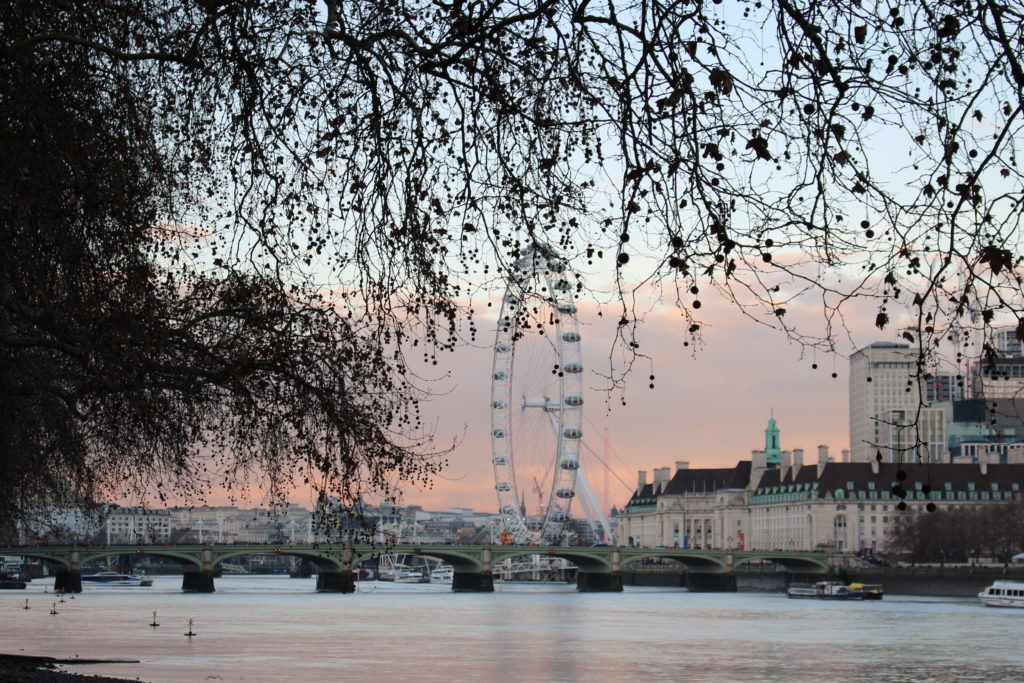A giant bicycle wheel on the banks of the Thames.
This is London’s Eiffel Tower or Brussels’ Atomium. I love it. Though not everyone did when it was first built in 1999.
Now an integral part of London’s modern skyline and an accepted symbol of our city, the London Eye, originally known as the Millennium Wheel, was first seen by many as a ‘white elephant’ and an oversized fairground attraction, devaluing the surrounding buildings. Having never had much time for the grandiosity of the old County Hall, I would disagree.
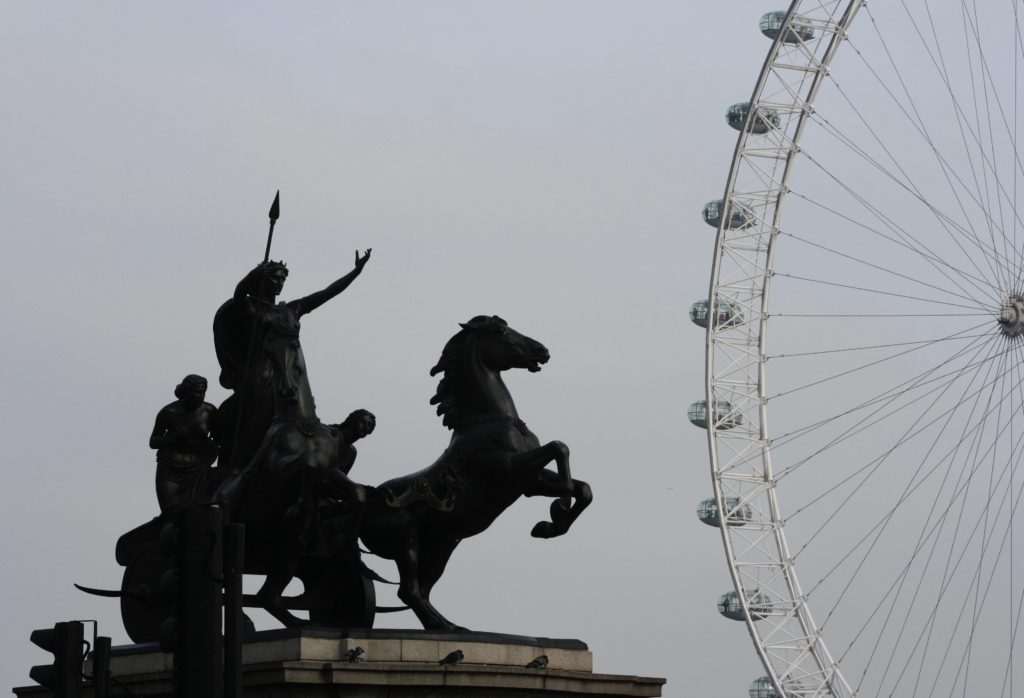
One of its fiercest critics was Lord St John of Fawsley, Chairman of the Royal Fine Art Commission from 1985 to 1999. Clearly not a fan, he said it “would ruin London” and that he hoped it would “be moved to a more suitable site at the earliest possible moment”. Nearly twenty years later, it is still looking out over London. And London is looking back at it as it turns by day, gleaming in the light with cameras flashing from the capsules, often messaging us with coded night-time illuminations including: red and gold to mark Chinese New Year; rainbow colours for Gay Pride; pink for Valentine’s Day; and red, white and blue to mark the birth of Prince George. But perhaps its most famous image is at the centre of London’s spectacular annual New Year’s firework display.
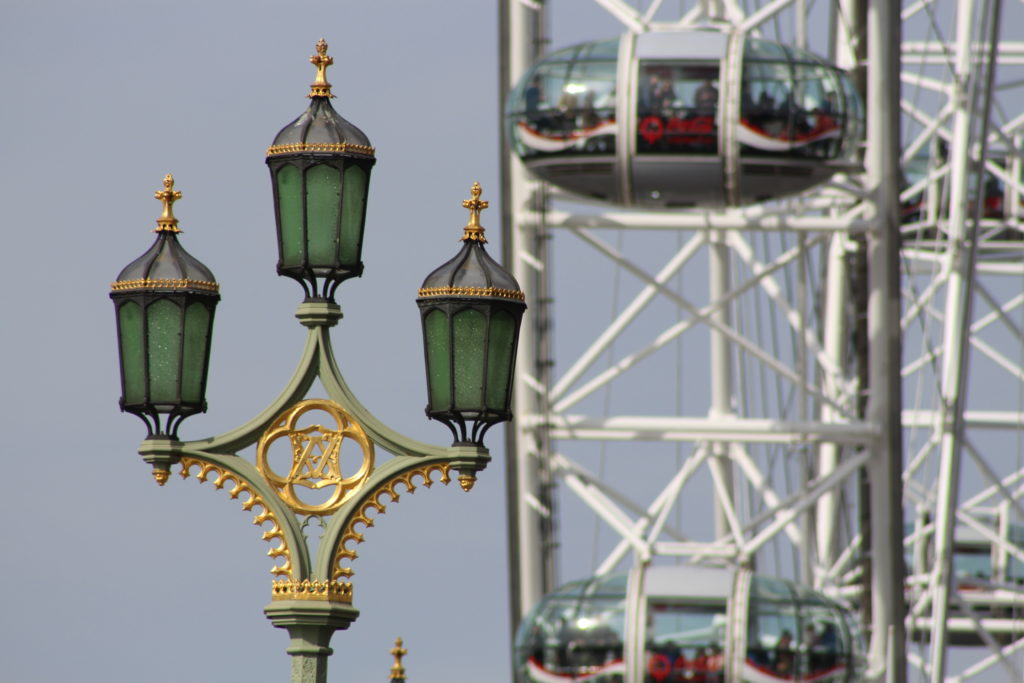
Architect David Marks designed the Eye in 1993 with his wife and partner, Julia Barfield, for a competition in the Sunday Times to mark the millennium. But no winner emerged. After all their work, and with great faith in the project, they set about developing it themselves; found the site on the Southbank; mortgaged their home to pay for the initial costs and found financial support from Bob Ayling, head of British Airways. It took about six years to build. And in recognition of their original sponsors, though since then changed, the rides around the wheel are still called flights. There are thirty-two pods representing all London’s boroughs from Barking to Westminster. However allowance has been made for the widely held superstition that the number thirteen is unlucky, so that the pods are numbered 1 – 33.
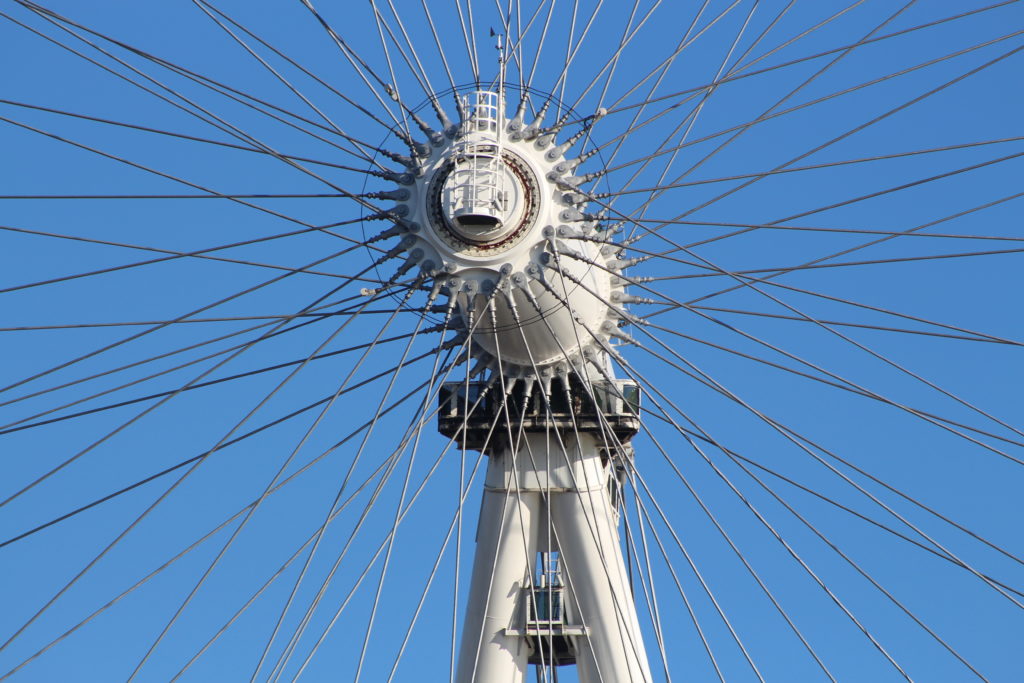
Six European countries were involved in the construction. The steel was British but sent to Holland for manufacture; the cables were Italian; the bearings German; the spindle and hub were cast in the Czech Republic, the pods made in France with Italian glass; and the electrical parts came from the UK. When ready, everything was floated up the Thames by barge and assembled at the site. No easy feat as the sections were large, and careful attention had to be paid to the tides so that there was enough clearance to pass beneath the bridges.
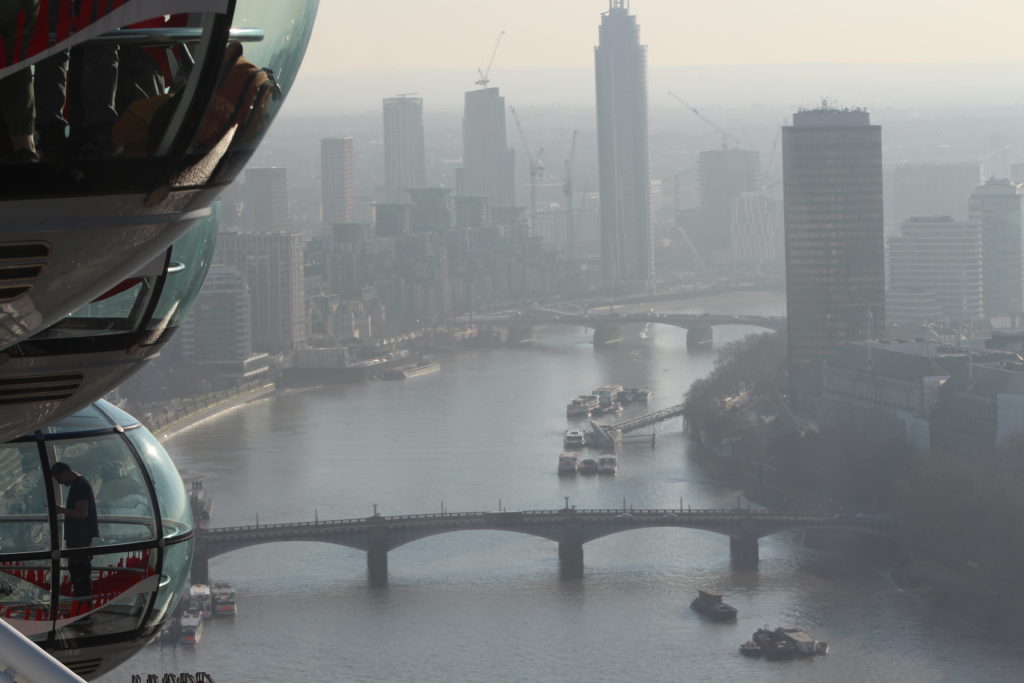
The Eye has added interest and variety to London’s skyline, enhancing views from all over the city and specially along the Thames, where its ever changing reflection adds a magical glow to the river.
For further information:
See: A. P. Mann,N. Thompson, and M. Smits
Building the British Airways London Eye
